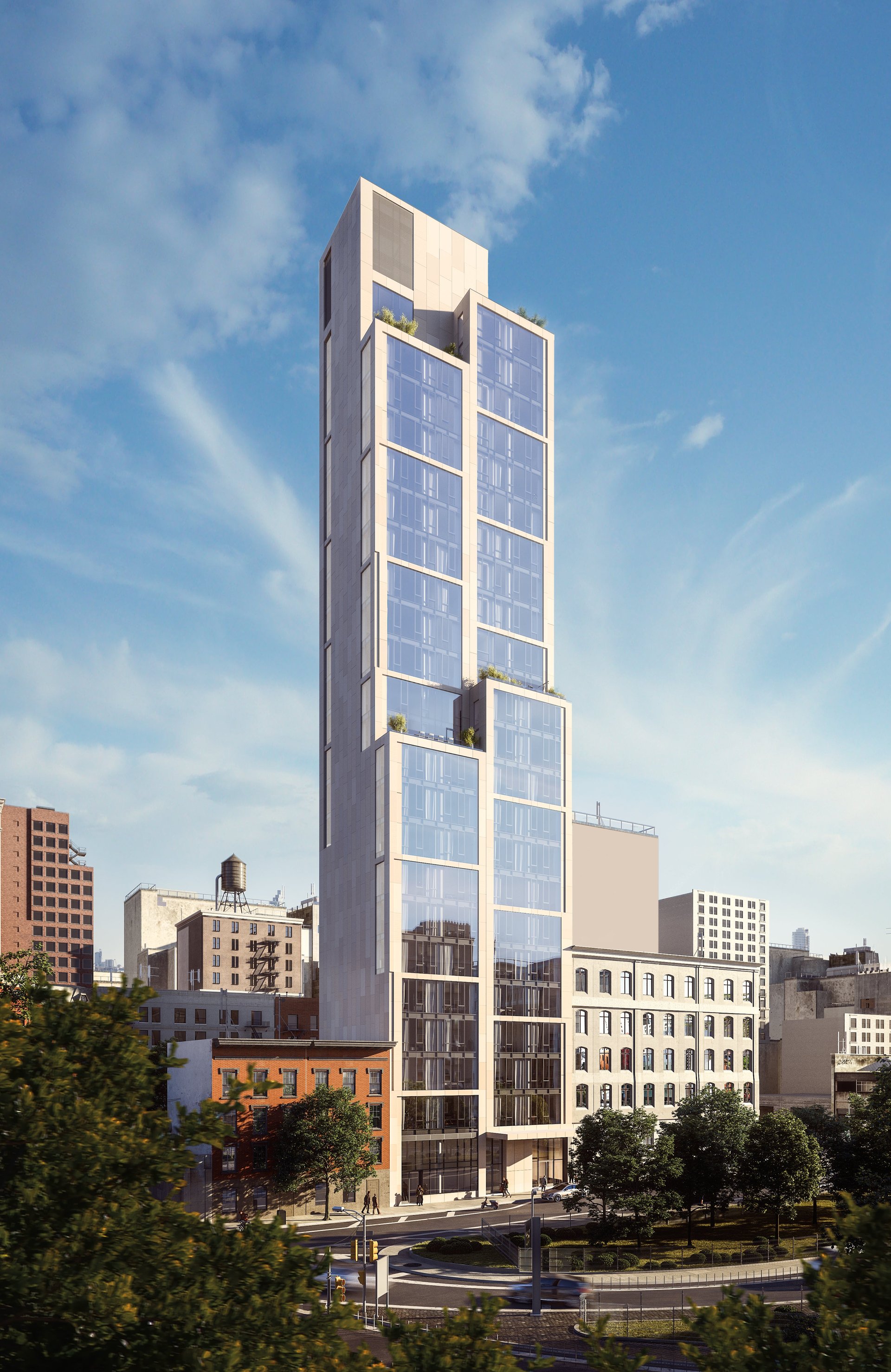This NYC luxury building has the air-purifying power of 500 trees
Manhattan’s trendy west SoHo neighborhood just got an eco-friendly new addition with 570 Broome. From the outside, the 25-story building looks like a regular luxury condo. But it’s actually the first building in the US to boast a subtle but powerful enhancement that makes it good for the planet.


Manhattan’s trendy west SoHo neighborhood just got an eco-friendly new addition with 570 Broome. From the outside, the 25-story building looks like a regular luxury condo. But it’s actually the first building in the US to boast a subtle but powerful enhancement that makes it good for the planet.
The facade is coated with a spray-on solution called Pureti. The treatment, which is water-based, provides 570 Broome with the purifying power of 500 trees—which is basically like taking 2,000 cars off the road for a year.
Pureti works by breaking down contaminants clogging Manhattan’s air via a photocatalytic process that transforms polluting particles into oxidizing agents. They’re then released into the atmosphere as harmless minerals. This process happens super fast—like millions-of-times-per-second fast—so that the surface is perpetually self-cleaning, minimizing operational costs for the building.
What’s more, the façade of 570 Broome is crafted from sintered stone slabs of Neolith—a materials brand that specializes in clean design. Indeed, Pureti can be applied to essentially any surface including glass, metals, concrete, and stucco, etc. It doesn’t work great on Teflon and wax, but those materials are typically not found in residential construction.
Glen Finkel, the co-founder and president of Pureti, notes that the technology for the treatment was developed in 2004, when Finkel, a former clinical psychologist, teamed up with organic chemist John Andrews, who had experience developing textile coatings for airplane exit chutes, life vests and parachutes for NASA. “We’ve been perfecting it ever since,” says Finkel.
And it’s already seeing international demand. In addition to more North American projects (including “some soon to become iconic references,”) Pureti will soon be on buildings in “Spain, Argentina, Turkey, etc.” He adds that “China and India are huge potential targets, but so are Europe, Mexico and the Middle East.”
GREEN BUILDING IN THE AGE OF URBAN POLLUTION
To make it in Manhattan’s over-saturated luxury market, high-end buildings now need a little something extra. While classic design, 24-hour amenities, and a trendy zipcode continue to attract wealthy buyers, these days they’re are almost a given across New York City.
Veteran New York real estate broker Shlomi Reuveni reflected on the changing landscape in an interview with Mansion Global earlier this week, noting that a decade ago there were clear “good” and “bad” neighborhoods in Manhattan, but today virtually all of them are considered “good”.
So what will set a luxury building apart in the future, and where should high-end buyers park big dollars? Reuveni, for his part, says the future is in sustainable and green buildings, telling the site that “new technologies and sustainable technology will drive the market in years to come.”
And so far they are. The days of getting points for basic solar paneled roofs are long gone, with breakthroughs like 3D-printed homes, and buildings with their own water conservation systems setting the bar far higher for “green” developers.
The need for more eco-minded developments has never been greater. A recent CityLab study, for instance, revealed that if you live in a city and breathe air, you’re basically a smoker. Which helps explain why Tahir Demircioglu, the architect behind 570 Broome, views Pureti as “a win-win situation for both the urban environment and the developer/owner. [Pureti] cleans the air and reduces the use of chemicals to do so.”
Demircioglu adds that residents will also enjoy greater peace of mind by lowering their impact on the environment, and has plans to use Pureti on a multi-family development on Long Island. He also echoes Reuveni’s assessment of the future of green living: “I think there is and will be more demand towards better living standards with more environmental consciousness.”